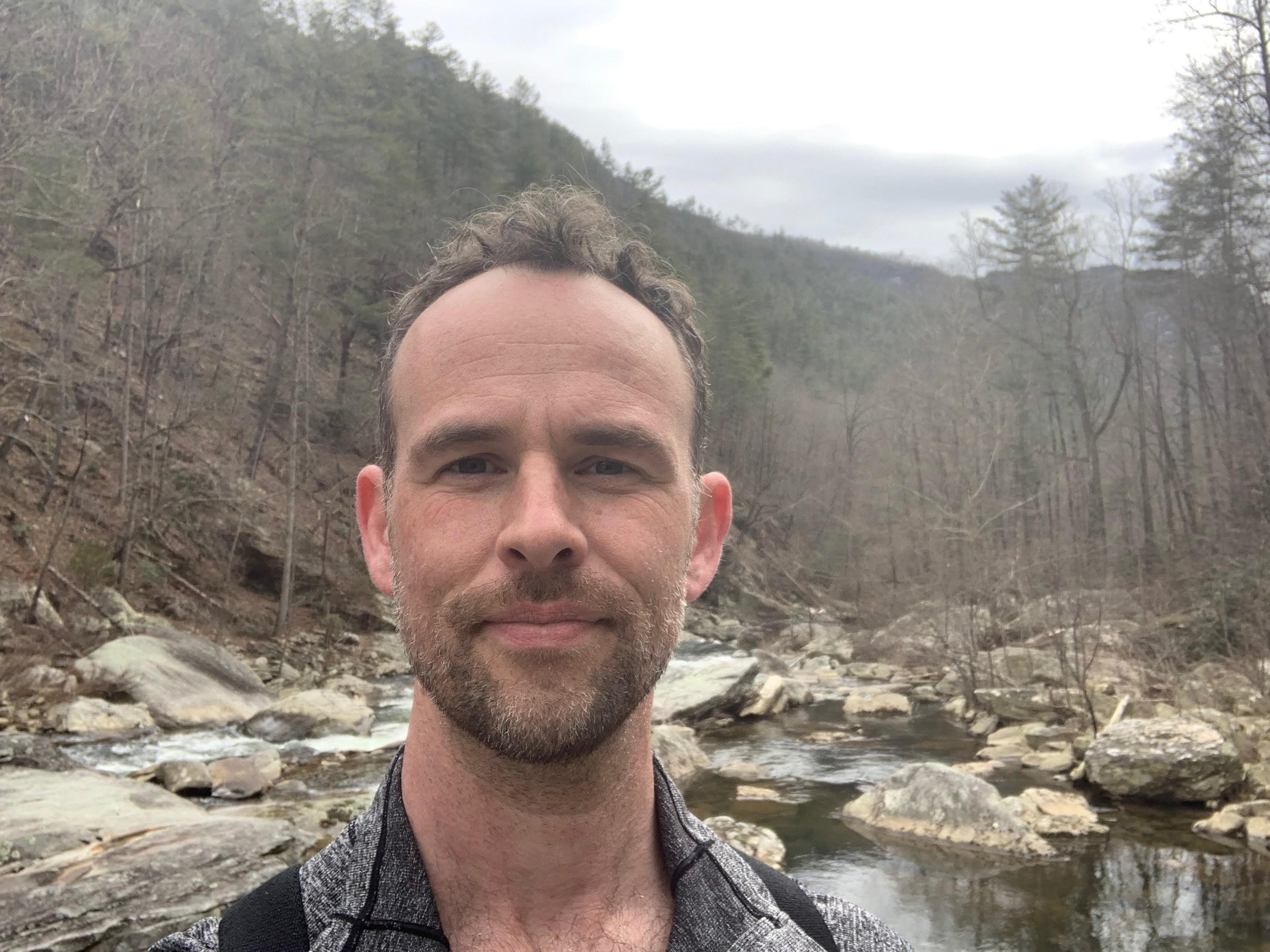PRESTON MONTAGUE BIO
Preston Montague is a landscape architect and artist working to strengthen relationships between people and the natural world. His eponymous studio focuses on creating a flow between the arts, horticulture, and landscape architecture in the pursuit of building places that have meaning and ecological depth. When not in the studio, Preston enjoys teaching landscape architecture at North Carolina A&T University and hiking the wilder places. You can connect with Preston Montague via his website, Instagram, or LinkedIn.
SHOW NOTES
Discussing the ecology and lessons of Panthertown Valley its analog to urban environments
Preston’s passion for plants sparked from his mother’s encouragement of art, his father's work with the USDA, and how his love for gardening emerged in his twenties
Preston’s practice in the aquarium industry, the influence of Takashi Amano, and his prior work with koi ponds, water lilies, and lotus
Preston gives practical advice for adding water features to gardens, suggesting Pontederia cordata (pickerel rush), Lilaeopsis brasiliensis (swordgrass), and Sagittaria latifolia (duck potato), the importance of including small fish to manage mosquitoes, and how aquatic plants can amplify garden resources
Preston shares his journey from horticulture to landscape architecture inspired by the interactions in his Greensboro garden, his education at NC State, the practical skills gained, and the decision to pursue a master's in landscape architecture
The differences between landscape architecture and residential landscape design
He discusses the development of Preston Montague Studio and how it fulfills his dream of creating an artist's studio environment
The challenges landscape architects face in incorporating plants into projects due to budget constraints, long timelines
The lack of follow-up or post-occupancy evaluation in landscape architecture, which affects plant decisions
Preston notes that many landscape architects rely on tried and tested patterns due to time and budget pressures
He stresses the need for landscape architects to provide management plans and ensure proper installation of plants
The issue of improper plant installations due to availability problems or other constraints
He advocates for landscape architects to focus on maintenance and follow-up to improve planting designs
Montague suggests involving landscape architects and horticultural consultants in projects to enhance plant use without adding significant overhead
Preston’s passion for incorporating shrubs into urban environments
Montague describes the benefits of shrubs in creating texture and color in landscapes and their utility in various urban settings
He discusses his experience with large-scale herbaceous plantings and the need to adapt them to local climates
Montague highlights the importance of shrubs in code-mandated landscapes and the challenges posed by the recent native plant mandate in North Carolina that requires all state-funded projects to use 100% native plants, which also impacts nursery production and landscape design.
Preston explains the difficulties in sourcing native shrubs and trees that meet the new regulations
Preston shares his experience in promoting native plants and adapting plant palettes to reflect local species.
Preston emphasizes the importance of considering the local ecosystem and environment when selecting plants for urban landscapes and how native plants help add ecosystem service potential to large-scale landscapes, such as privacy berms.
Succession can be manipulated to maintain certain ecological states, like herbaceous or shrub levels, to suit specific environments.
Fire suppression and lack of disturbances in places like the Piedmont affect shrub diversity and ecosystem health.
Climax forests need periodic disturbances to maintain diversity and ecosystem health.
A planting plan is a snapshot in time; landscapes evolve post-installation.
Woodland management techniques, like those at Great Dixter, balance harvesting with promoting species diversity.
Promoting shrub use in urban landscapes requires proper management and maintenance.
Shrouded in Light by Kevin Philip Williams and Michael Guidi
Influencing municipal design involves creating diverse and layered planting plans for habitat creation, and updated plant lists and diverse plant selections are essential for sustainable urban planting.
Residential landscape design often mirrors commercial work, focusing on practical and tidy planting solutions
Creating layers in planting designs enhances habitat potential and supports biodiversity
The importance of structure and diversity in plantings for achieving ecosystem services
Effective shrub maintenance and pruning practices are crucial for long-term landscape health
Educating clients on proper shrub care and maintenance ensures the success of planting designs
Maintenance is often undervalued and underfunded, leading to improper pruning and landscape care practices
His drawing practice as a crucial aspect of his design work, emphasizing drawing as a way of thinking with low expectations and judgment
Advice for drawers like focus on observation rather than strict accuracy and encouraging participants to lose themselves in the process
Project Codex Carolinum involved traveling around the state to draw plants in different seasons and noticing patterns in their habitats
Using sketches on photographs or digital platforms like Procreate and AutoCAD to convey design experiences effectively
Systems and processes Preston uses like having conversations, post-construction visits, maintenance participation, and documenting work to ensure longevity and competitiveness in the field
Time management with email and design
Preston's focus on restoration rather than traditional garden design due to the context of development in the Triangle area
Balancing time management between design processes and field work during construction for optimal results
Landscape Painting Now by Todd Bradway and Barry Schwabsky where Preston is exploring composition, color, and form for inspiration in landscape architecture
The magic of visiting Panthertown during mid-August to mid-September for its unique ambiance
How to propagate more horticulturists including encouraging conversations and mentorship to propagate a love for horticulture, highlighting the importance of sharing knowledge and experiences within the community
How to connect with Preston Montague via his website, Instagram, or LinkedIn

